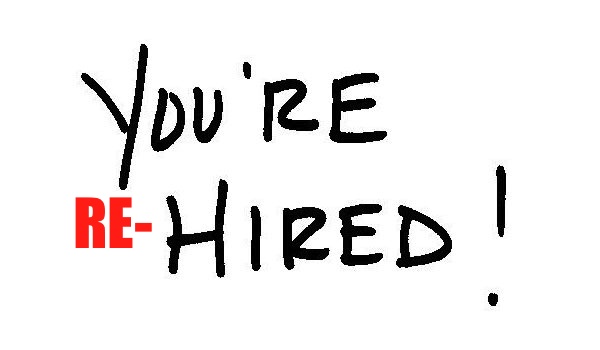Firm Management
When, How, (and When Not To) … Rehire Former Employees
Bringing back former employees can shorten the time it takes to vet candidates, as you already know much of their work history and fit with your corporate culture. As a “known quantity,” you reduce the chances of making a bad hire.
Jul. 15, 2016

History repeats itself, and sometimes so does hiring. When it comes to talent management, many employers consider former workers. In fact, a recent Robert Half survey shows 98 percent of human resources managers said they would likely rehire an ex-employee.
Why are companies so eager to bring back “boomerang” staff?
Why it’s good to rehire
In the public accounting sector, the demand for skilled talent can mean fewer accomplished candidates available and a lengthy hiring process. This is especially the case for professionals with in-demand skills, certifications and years of experience.
Bringing back former employees can shorten the time it takes to vet candidates, as you already know much of their work history and fit with your corporate culture. As a “known quantity,” you reduce the chances of making a bad hire. Additionally, boomerang employees are likely already familiar with your firm’s processes and technologies, meaning they can start contributing sooner.
The downside to rehiring
There are many advantages to bringing back former employees, but it’s not without risks. For one, while most HR managers wouldn’t hesitate to rehire, employees don’t always feel the same way. In the above survey, only 48 percent of workers reported they would consider coming back.
This finding suggests that many workers leave an employer for reasons of dissatisfaction, and a rehire would place them in the same situation. Perhaps they didn’t get along with their manager or coworkers, or they didn’t see a viable in-house career path. If such sources of discontentment remain unchanged, the risk is the former employee will soon leave again.
How to rehire
In the hiring process, treat former workers like other job candidates.
- Evaluate why they left. When rehiring, consider only those workers who left the company on amicable terms and for “good” reasons. These terms and reasons could include downsizing in the event of a merger, or their moving away for a spouse’s job but then returning to the area.
Whenever possible, review their exit interview to verify they had positive feelings about your firm when they left. It should go without saying to not consider former employees who were terminated or asked to resign.
- Conduct an interview. Even though you may be well-acquainted with boomerang employees, don’t skip the formal interview process. The longer the interval between the departure and possible rehire, the more important it is to go in-depth during the discussion.
Here are some questions for former staff seeking to return:
- Why did you decide to apply here again/agree to an interview?
- What were your favorite aspects of working at this firm? Least favorite parts?
- What skills or expertise did you pick up in the years you were away?
- What would you bring to this position other candidates would not?
- Check their references. This process shouldn’t take very long since your firm is on the reference list. However, you should cover all your bases, just in case. Avoid letting your familiarity with them goad you into shortcutting this step. Along the lines of contacting references, conduct a background check if it’s your firm’s policy to do so.
Tips for future rehires
Rehiring past employees is a sound recruitment strategy. As such, lay the groundwork with people leaving your organization on amicable terms for a possible return:
- Conduct an exit interview. This final meeting is more than a formality. The human resources department — and you — can gain valuable information into why top performers leave, and devise better strategies for employee retention.
- Build a bridge. When a star performer leaves your company on good terms, keep the door open. Let them know you valued their contribution and would be happy to see them apply for open positions in the future.
- Stay in touch. Connect with departing employees on LinkedIn or other means, which could ease their re-entry in case they seek to come back. Also, when your firm has an opening, preferably one with a shinier job title and higher salary, send them an email and a link to the job posting, and tell them you’d like to work with them again.
Rehiring is a valuable strategy, especially when current market conditions make it difficult to land experienced accountants. As long as you do your due diligence, you’ll maximize your chances of making a strong hire.
———–
Paul McDonald is senior executive director at Robert Half, the world’s first and largest specialized staffing firm. He writes and speaks frequently on hiring, workplace and career-management topics. Over the course of more than 30 years in the recruiting field, McDonald has advised thousands of company leaders and job seekers on how to hire and get hired.
